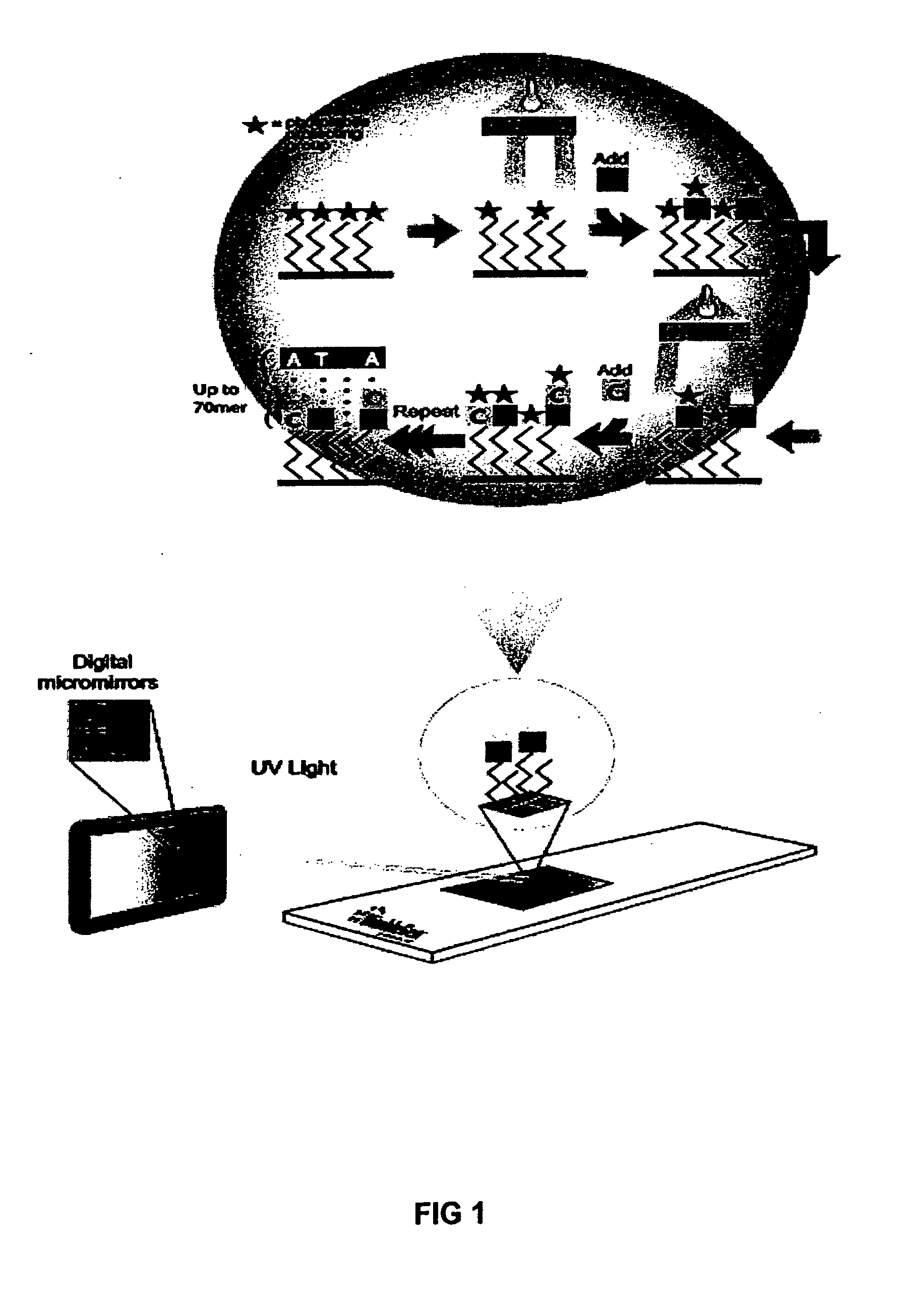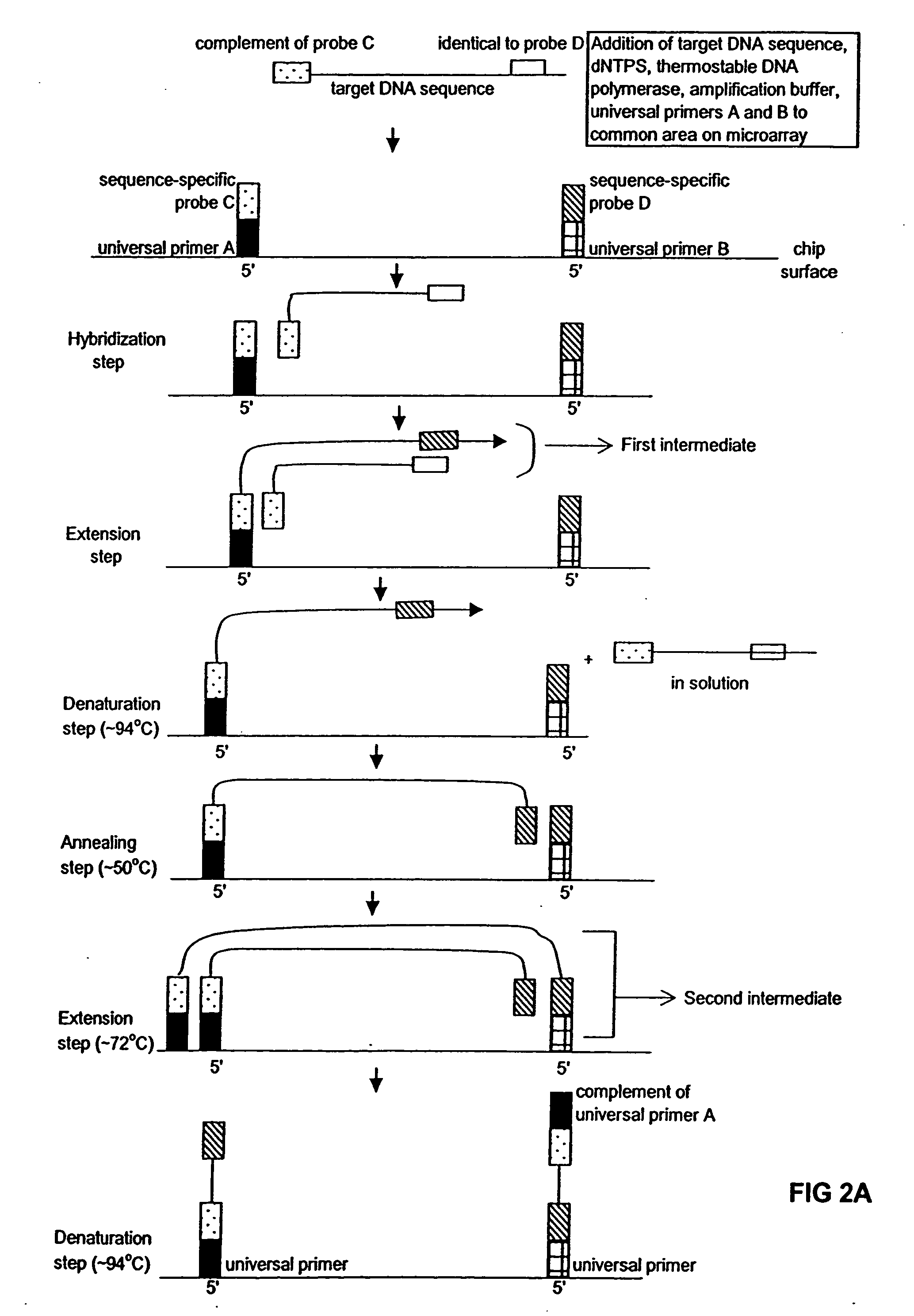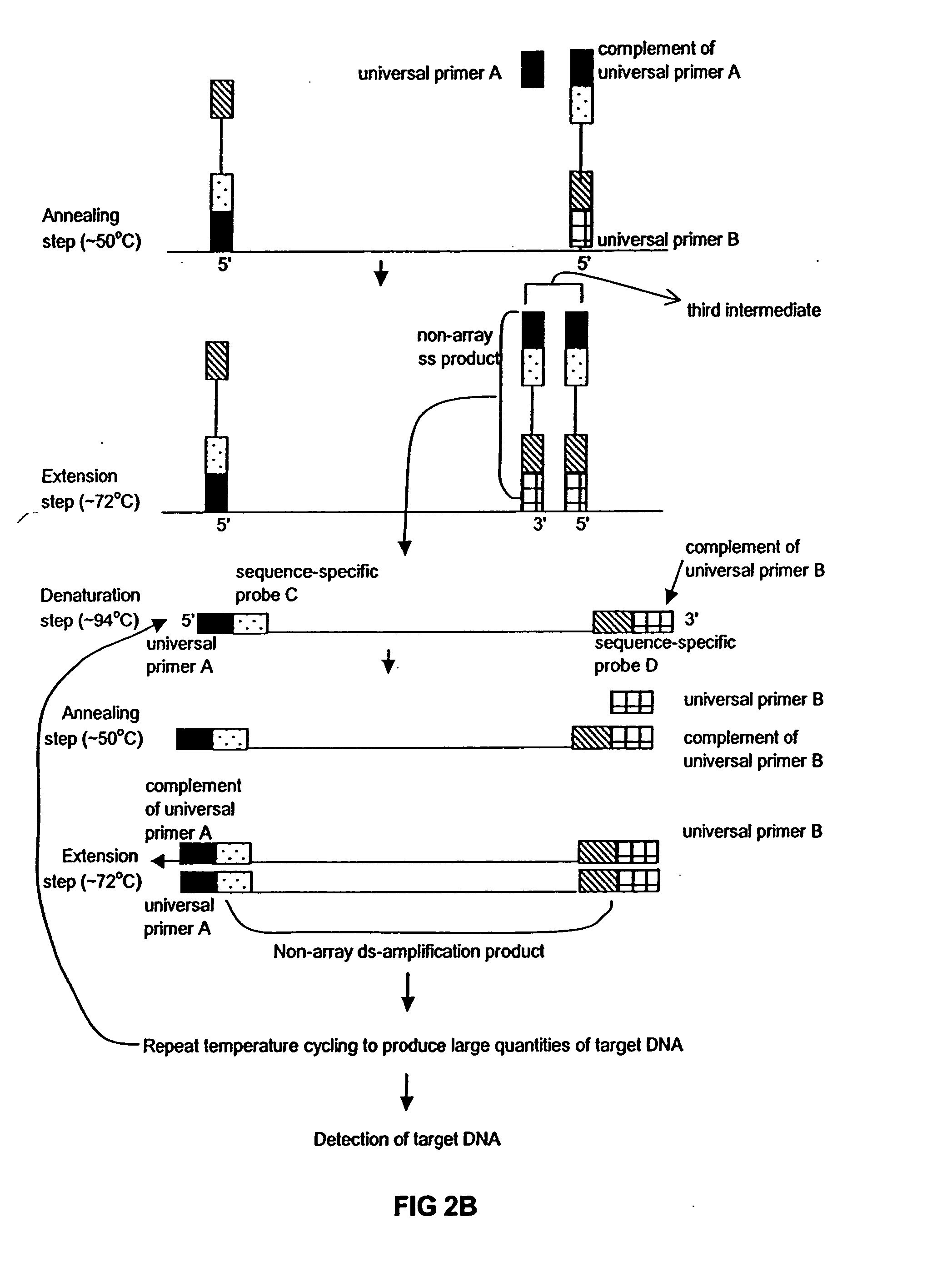Method of performing PCR amplification on a microarray
a microarray and amplification technology, applied in the field of pcr amplification on a microarray, can solve the problems of reducing the complexity of the genome, unable to tap into and unable to fully exploit the full capacity of the microarray technology
- Summary
- Abstract
- Description
- Claims
- Application Information
AI Technical Summary
Problems solved by technology
Method used
Image
Examples
Embodiment Construction
[0015] The present invention broadly relates to a method of amplifying target DNA sequence on a microarray using PCR or multiplex-PCR. The method employs at least two array-immobilized probes each of which is a combination of a universal primer, a sequence-specific probe, and optionally a calibrated probe sequence to quantify amplified target DNA. Each array-immobilized probe is synthesized in a feature or common area on the microarray using a maskless array synthesizer. A sample containing target DNA along with a sufficient amount of amplification reagents are added to each common area on the microarray containing the array-immobilized probes. Then, target DNA amplification is initiated by hybridizing complementary region(s) of sample target DNA sequence(s) to sequence-specific probe(s). Then multiple rounds of thermal cycling produce non-array target DNA strand(s) having universal primer(s) and sequence-specific probe(s) flanking amplified target DNA sequence(s) of interest.
[0016...
PUM
| Property | Measurement | Unit |
|---|---|---|
| pH | aaaaa | aaaaa |
| pH | aaaaa | aaaaa |
| temperature | aaaaa | aaaaa |
Abstract
Description
Claims
Application Information
 Login to View More
Login to View More - R&D
- Intellectual Property
- Life Sciences
- Materials
- Tech Scout
- Unparalleled Data Quality
- Higher Quality Content
- 60% Fewer Hallucinations
Browse by: Latest US Patents, China's latest patents, Technical Efficacy Thesaurus, Application Domain, Technology Topic, Popular Technical Reports.
© 2025 PatSnap. All rights reserved.Legal|Privacy policy|Modern Slavery Act Transparency Statement|Sitemap|About US| Contact US: help@patsnap.com



